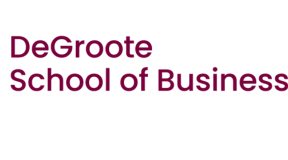The most common line a marketer will hear is: “Nobody reads email.” Nothing stops a conversation quicker.
Let’s get this out of the way, email works. Here are all the stats you need that will show you that not only do people read emails, but they’re still an important communications tool.
So, how can we increase the readability of emails?
Here are several tips to help you craft, (potentially) better emails.
Write emails you would want to read
This sounds simple and it is. Here’s a secret good writers have: They write for one person and one person only.
Too often when we write, we write for the masses, but the most effective writing is focused on one person. Make this your mantra when you’re writing.
Need some other tips?
- Write the title of your email last and ask yourself: What would make me open this email?
- Find someone you trust and have them read your writing.
- Write in advance and never rely on your first draft. Edit. Edit. Edit.
- Write for the internet — aim for a grade 7 reading level.
If you need inspiration, this is a great resource to get you thinking.
Structure matters
We all want to write paragraphs, but let’s be honest, no one reads paragraphs.
Humans scan for information that we think will be useful.
And with more emails being viewed on mobile devices (85% of users use a smartphone to check their email) – structure matters.
How can we make our emails easier to scan?
- Use short sentences; use fewer commas
- Bullets (like this one) are your friend
- Clear headings
- A note here: Please use the headers styles. They’re not only better than bolding, but they help with accessibility.
- No buzzwords
- Add images
- Bold your takeaways
This is not an exhaustive list. Structure your email to guide your readers’ eyes to the main takeaways. The less words used, the better.
Have a call to action
Give your reader something to do. Why? Two immediate benefits come to mind:
- It gives a purpose to the email.
- You wrote the email for a reason. You’re convincing the person to do something. Just make sure your call to action (CTA) is easy to find and understand.
- Using CTAs gives you valuable data that allows you to take other steps.
- Examples include: You can A/B test different CTAs. You can determine which styles of email lead to better results. You can find out which email headings lead to better open rates and higher CTA returns.
The bottom line: You emailed your audience for a reason. Justify their decision to open your email, or next time you email them they might just ignore or unsubscribe.
Stuck for ideas? Here are some ideas of CTAs and how you might want to use them.
Is this list exhaustive? No. We haven’t even touched on setting metrics to determine if your email was successful or not.
What this post does is give you a solid foundation.
There is no silver bullet to cracking email marketing and writing good emails but having a solid foundation will let you experiment in ways you never thought of when it comes to email.
Email doesn’t have to be boring; it just needs to be easy to read.
Note: The above post scored at grade 5 reading level. Here’s how you check it.


